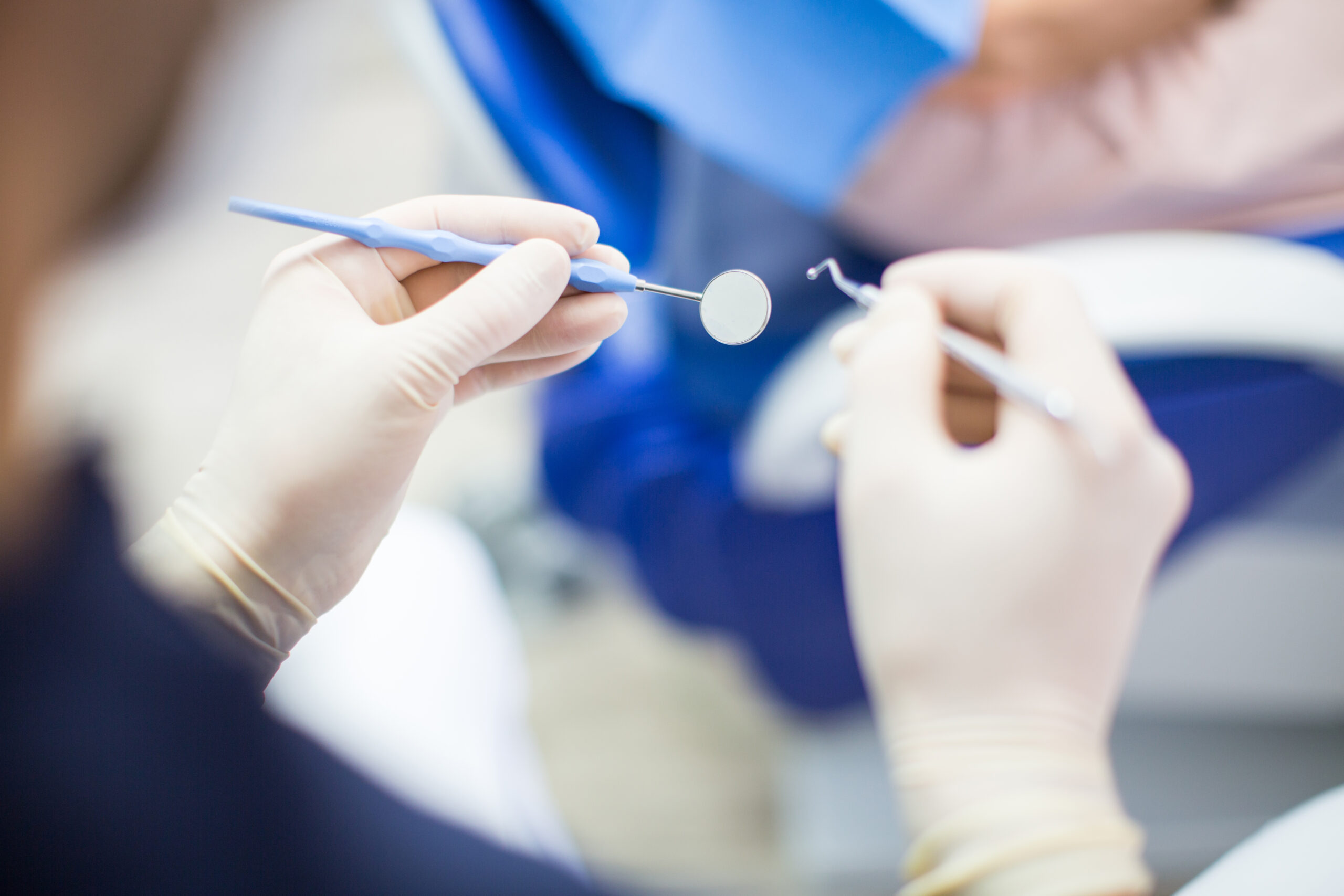As a leader in research, education, and care, Guy’s and St Thomas’ NHS Foundation Trust’s dental team runs a busy clinic, producing thousands of patient letters and other documents every week. With turnaround times of up to four weeks, the team needed a more efficient way to update patient records and create follow-up letters. Speech recognition was the ideal technology for the team, but there was one potential roadblock—the open-plan environment meant there was near-constant noise from dental equipment and other personnel.
Hospitals, clinics, and practices are busy places, which often means they’re noisy places, too. That’s especially true for the dental hospital at Guy’s and St Thomas’ NHS Foundation Trust’s Tower Wing building, where six open-plan bays are arranged in a U-shape, and nearly 200 staff share the space to care for patients and complete administrative work.
From the whirr of dental drills to the sounds of people moving through the corridor, there’s a lot going on in the clinic. And that meant that when the team started looking for a new solution to help them manage their documentation tasks more efficiently, it had to fit into this often-loud and always-busy environment.
A busy clinic creates a mountain of admin work
Guy’s and St Thomas’ NHS Foundation Trust’s dental hospital is Europe’s largest dental school, the UK’s number one dental care clinic, and a world leader in research as part of the King’s College London Dental Institute. Each week, the team sends approx. 1,500 letters to its patients, as well as producing all the other types of administrative documentation required to help the hospital run smoothly.
This story will be familiar to most clinical teams: administration staff would type up letters based on dictated notes from clinicians after their appointments. Slow and labour-intensive, this manual approach added multiple days to the hospital’s turnaround times, with letters frequently taking up to four weeks to reach the patients. Often, support staff would be assigned to specific clinicians to help them complete their documentation, taking them away from other tasks.
With the NHS aiming to deliver outpatient letters within seven days of appointments, Richard Manthorpe, the department’s Dental Assistant General Manager at the time, started looking for a new way to manage the hospital’s documentation workload. He identified medical speech recognition as the ideal approach, as it would allow clinicians to use their existing dictation skills to document their appointments quickly and efficiently—without needing support from other staff.
Fast, accurate, and prepared for the noisiest clinical environments
For the team, accuracy was a major concern. Like other medical specialties, dentistry uses a lot of unique, complex vocabulary that can be difficult for some speech recognition engines to understand and record correctly. The search for a high-accuracy solution led the dental hospital to become an early adopter of Dragon Medical One speech recognition within the Trust
Just like when they were dictating to assistants, the dental clinicians can speak in their natural voice while Dragon Medical One automatically creates a highly detailed note, record, or letter. Dragon’s recognition engine is 99% accurate from first use, and because it’s tailor-made for healthcare teams, it can handle even the most complex technical terminology with ease.
Crucially, Dragon Medical One is hosted in the cloud, where automatic updates from our research and development teams ensure the solution’s dictionaries are kept up-to-date. And if individual clinicians have their own preferred shorthand or working style, it’s easy for them to customise their documentation companion to match their habits and needs.
Even in the loud environment of the dental hospital, Dragon Medical One has no trouble understanding the clinicians, easily parsing their voices from the background sounds of noisy equipment. It’s particularly efficient when paired with our PowerMic Mobile app, as Richard explained: “Even in this setting, the solution quickly proved it was reliable and helped us to quickly improve the turnaround times of our letters to patients. There are also several clinicians who are using the mobile app, which allows them to use their mobile phone as a microphone.”
Patient letters are now available in days, not weeks
The Trust’s dental hospital quickly saw an improvement in its documentation processes; the team cut the turnaround time for patient letters down to just five days with Dragon Medical One. They also found the quality of documentation improved as the dental team now dictate their own notes directly into the clinical systems, supported by the high accuracy levels of Dragon Medical One.
“The uptake of speech recognition has allowed us to become more flexible with our workforce and helped increase the turnaround of our letters. The quality of our documentation, both internally and externally, has improved significantly,” said Richard.
More than 90% of the team at Guy’s and St Thomas’ NHS Foundation Trust’s dental hospital now use Dragon Medical One. Since the deployment, it’s become a core component of the daily workflow. So much so, that the dental team’s “super users” have shared their experiences and supported other departments across the Trust with their own Dragon deployments.
The dental team is now getting ready for the next step in its digital transformation: shifting from legacy systems to an Epic electronic patient record. Not only is Dragon Medical One fully compatible with Epic, supporting a smooth transition, but this will also unlock an extra level of productivity for the Trust’s teams, with new opportunities for clinicians to create custom workflows, voice commands, and templates within their new system.







